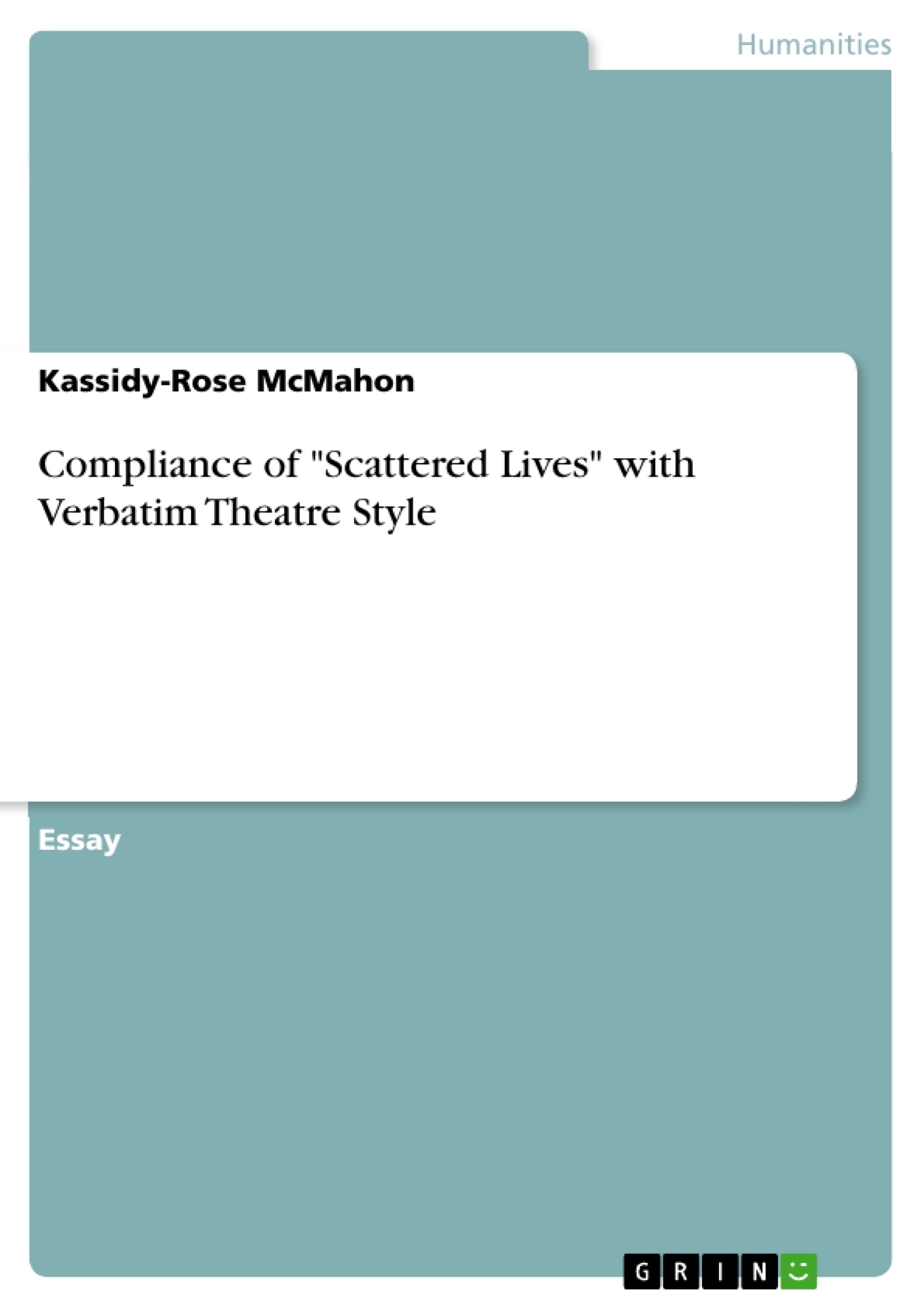Verbatim Theatre is a relatively modern style of theatre, where performances are based on real events and the personal experiences of real people The emerging style is “one of the most incisive forms of political theatre” and “has arisen as the medium chosen to depict major societal issues” (Cantrell, 2012). The performance "Scattered Lives" was written and directed by Sally McKenzie and was first performed by La Boite Theatre on 30th April 2001, Brisbane with Pip Boyce and Sandro Colarelli as the female and male roles respectively. The highly emotive and politically provocative performance was rightfully nominated for a prestigious AWGIE writing award in 2002, due to its significance in sharing the lives of refugees. The performance impressively manipulated the conventions of Verbatim Theatre and the elements of drama to masterfully facilitate dramatic action and communicate meaning to audiences. Through the exploitation of episodic structure, shared story and tension, "Scattered Lives" has effectively conveyed the personal experiences of Australian refugees through the production of an informative and empowering performance.
Table of Contents
- Compliance of Scattered Lives with Verbatim Theatre Style
- Episodic Structure
- Shared Story
- Tension
Objectives and Key Themes
This performance aims to explore the experiences of Australian refugees through the lens of Verbatim Theatre, a style that utilizes real-life events and personal accounts. The performance seeks to inform and empower audiences by highlighting the challenges and struggles faced by refugees.
- The use of Verbatim Theatre conventions to effectively communicate the experiences of refugees
- The impact of displacement and the challenges of adapting to a new culture
- The importance of sharing stories and giving voice to marginalized communities
- The power of theatre to evoke empathy and inspire social change
Chapter Summaries
- Episodic Structure: This section examines how the performance uses an episodic structure to connect the individual stories of refugees to the broader experience of displacement. It explores the use of narration, projected images, and music to transition between scenes and highlight contrasting cultures.
- Shared Story: This section focuses on the use of shared story, a key convention of Verbatim Theatre, to illustrate the collective experience of Australian refugees. It analyzes two specific scenes where individual stories are interwoven to create a powerful narrative.
- Tension: This section analyzes the use of tension in the performance to create dramatic action and heighten the emotional impact. It examines two scenes where tension is generated through dialogue, movement, and sound effects.
Keywords
Verbatim Theatre, Australian refugees, displacement, shared story, episodic structure, tension, dramatic action, emotional response, social change.
- Quote paper
- Kassidy-Rose McMahon (Author), 2016, Compliance of "Scattered Lives" with Verbatim Theatre Style, Munich, GRIN Verlag, https://www.grin.com/document/344394



